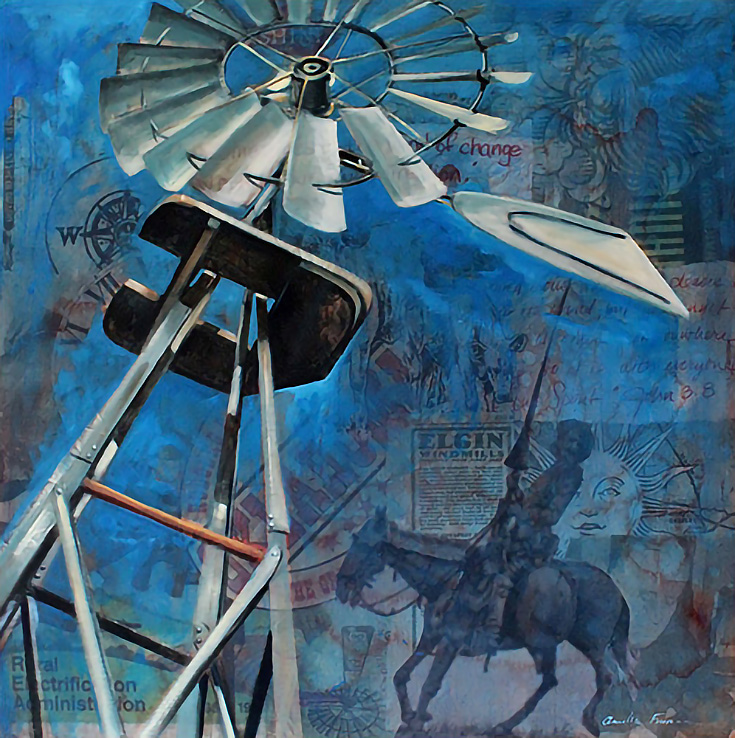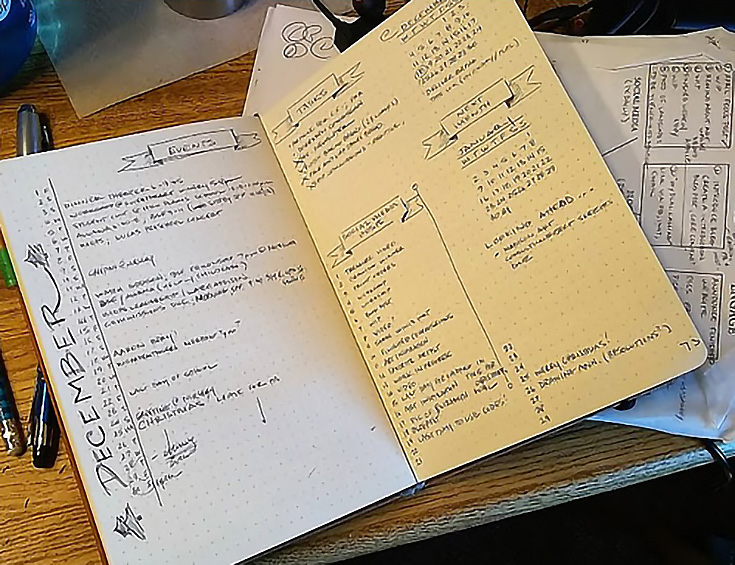“So, do you just wait for something to inspire you?”
That’s a question I hear all the time. . . and it reveals a common misconception about artists. It’s often imagined that we sit around, waiting for a muse of some sort to drop creative ideas into our brains, or for our internal creative thoughts to simmer and when the moment is just right, those thoughts will explode into a flurry of creativity resulting in tangible works of art. It almost has a magical, supernatural ring to it!
“Windpower” by Amelia Furman
Even many artists have this misconception, if not consciously, then subconsciously. And while it would be awesome if that was how art was made, it rarely works that way. Besides keeping up with the creative side of things, running your own art business requires a lot of moving pieces that don’t always work with our natural temperament! Things like marketing, product production, inventory management, and money matters take us far from our creative muse.
However. I’ve found in the past year that creating an art schedule has actually allowed me more time for spontaneity and “muse-following” than when I simply tried to tackle areas of my business as the feelings prompted. And I highly recommend setting up an art schedule, if you don’t already!
If structuring your creative time seem daunting, that’s OK! I’m going to share a couple tips for getting started. Keep in mind, these are all just ideas, and you can definitely “tweak” them so they fit your personality, artistic process, and goals:
1. Examine your day-to-day obligations
We are not just business owners and creatives. . . we are also parents, spouses, family members, and community members and we often have many non-art related time commitments. What are they? For me, I have to take care of my boys, get them to school in the morning, and help with ministries at our church.
I also have family and friend obligations that pop up occasionally. My family comes first, so it is important that I look at my current daily schedule and fit the art around it. I look for consistent open spots to know where the art activities can fit.
As an example, here’s how my current schedule looks now:
If your current schedule is packed and there is no room for art, perhaps it’s time to take a hard look at your priorities and start eliminating some things.
2. Make a list of any recurring business tasks
This list will probably include studio time, but it also needs to include things such as social media marketing (Facebook, Instagram/blogging, website updating), accounting (taking care of invoices, bills, inventory), and opportunity chasing (show applications, gallery visits, cold calls, proposals, etc).
What business aspects do you need to tackle consistently to move your creative business forward? Be sure to include ALL the stuff. Not just the fun stuff!
3. Decide on your production & marketing goals
And it’s important to be realistic about those goals.
If you’re like me and have dual roles as an artist and a mother, you will need to take that into consideration. I have found that I can realistically shoot for two-three original paintings every 10 days. I’ve also learned it’s feasible for me to post on social media once daily and publish around two blog posts a month. That’s about it.
If you make your goal too lofty, don’t sweat it—just back up a bit. If you find that you breeze through your goals too easily, perhaps you need to push yourself a bit more.
4. Stay flexible & be willing to adapt to life changes
A schedule is supposed to help, not hinder, so there are times when you just need to let it go for a season. For instance. . . I recently had to throw my normal schedule to the wind in order to prepare for the holidays with my family.
I grabbed time for my art when I could, and all non-essentials got ignored until the holidays were over. And that’s OK. When my life falls back into it’s more predictable pattern, I’ll pick that schedule back up.
5. Bonus tip—try out bullet journaling!
I would highly recommend looking into this list-based method of organizing your multi-faceted life. You can find out more about it by going to bulletjournal.com.
Overall, I have really found my type of scheduling structure to be very helpful. One of my favorite parts about it is that it can evolve with your changing life and it can be adapted for whatever you need. Hopefully you, too, will be encouraged to try creating a schedule for your creativity.
If you try any of my tips (or have others that you’re using) I’d love to hear how adding that structure to your creative process and business has helped you!
Special thanks to Amelia Furman for this fantastic post! To learn more about Amelia or her art, please visit www.ameliafurman.com.
This post may contain affiliate links.



